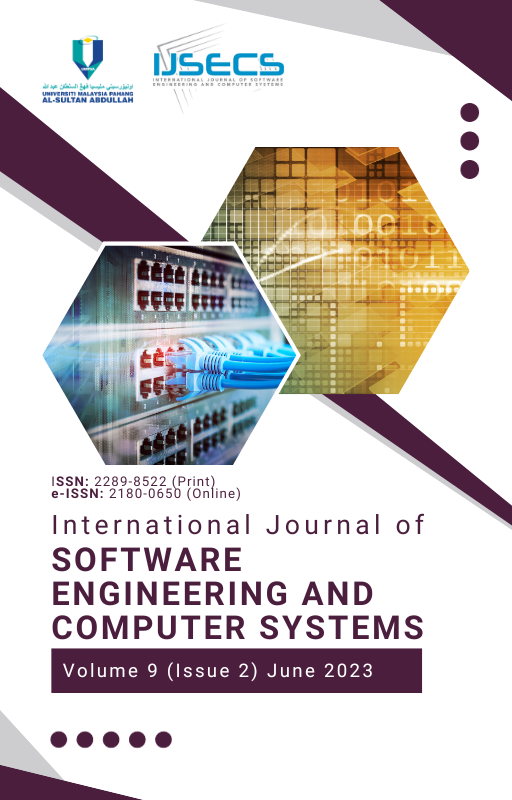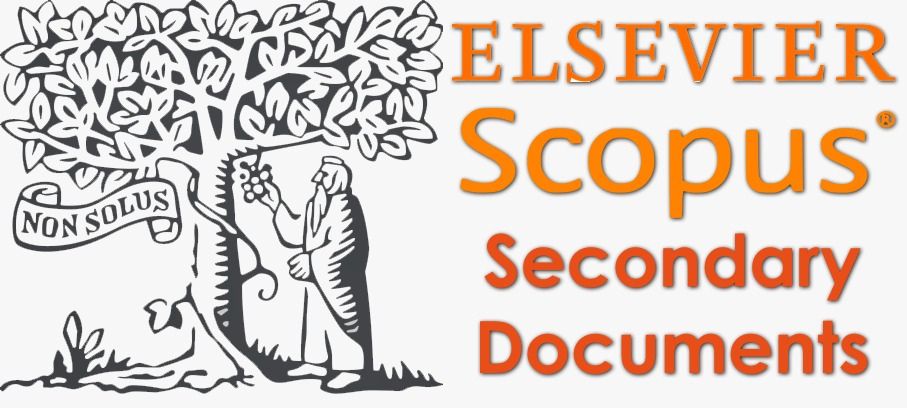THE MOBILE AUGMENTED REALITY APPLICATION FOR IMPROVING LEARNING OF ELECTRONIC COMPONENT MODULE IN TVET
DOI:
https://doi.org/10.15282/ijsecs.9.2.2023.2.0113Keywords:
Augmented Reality, Mobile Augmented Reality, Edutainment, TVETAbstract
Teens and young adults may get training in anything from the basics to advanced skills in various workplace and academic settings at Technical and Vocational Education Training and Education (TVET) institutions. Some aspects of teaching and learning in TVET cannot be articulated clearly, and trainees cannot perceive how things fit together. The study was conducted to determine the optimal platform to develop mobile Augmented Reality applications for TVET trainees and, to assess the TVET trainee’s readiness for AR-based mobile application training deployment. An online questionnaire was sent to trainees at Industrial Training Institute in Malaysia via the online system. A marker-based Augmented Reality application was created for the Basic Electronic Components module utilizing Unity software, the Vuforia engine, and C# script. Finally, the trainees were allowed to test the generated application. The trainees were interviewed to obtain data on their responses. The results indicate that 83% of the TVET trainees own and use android as the application platform. The results of the pre-test and post-tests used to gauge the success of the Augmented Reality application show that its usage in the sub-learning module significantly improved memory recalls for the TVET trainees. The outcomes showed that the Augmented Reality application suited the participants' learning needs and improved the effectiveness of their learning. The result from this project will serve as a pre-test for determining the most suitable platform to deploy the Augmented Reality application to be developed in the future.
References
Z. Abd Rashid, S. Kadiman, Z. Zulkifli, J. Selamat, M. Hisyam, & M. Hashim, "Review of web-based learning in
TVET: history, advantages, and disadvantages," International Journal of Vocational Education and Training
Research, 2(2), 7-17, 2016. https://doi.org/10.11648/j.ijvetr.20160202.11
S. Hase, & C. Kenyon, "Moving from andragogy to heutagogy : Implications for VET," Proceedings of Research to
Reality: Putting VET Research to Work: Australian Vocational Education and Training Research Association
(AVETRA), 1147, 2001, ISBN:991012820997202368
Milgram, Paul & F. Kishino, "A taxonomy of mixed reality visual displays" IEICE Transactions on Information
and Systems, 77(12), 1994, 1321–1329
M. Wang, & M. Kang, "Cybergogy for engaged learning: A framework for creating learner engagement through
information and communication technology," Engaged Learning with Emerging Technologies, ISBN: 978-1-4020-
-2, 2006, https://doi.org/10.1007/1-4020-3669-8_11
Ministry of Higher Education, "TVET for Human Resource Development," Technical Vocational Education &
Training (TVET) in Malaysia : Selected Works, 2007, http://mycc.my/document/files/PDF
A. Ismail., & N. Z. Abiddin, "Issues and challenges of technical and vocational education and training in Malaysia
towards human capital development," Middle-East Journal of Scientific Research, 19 February, 7–11, 2014,
https://doi.org/10.5829/idosi.mejsr.2014.19.icmrp.2
M. Edwin Obwoge, & O. Stela Kwamboka, "E-Learning in TVET: An opportunity for developing countries," ira
international journal of education and multidisciplinary studies, (issn 2455–2526), 3(3), 347–352, 2016,
https://doi.org/10.21013/jems.v3.n3.p8
M. M. Mohamad, A. F. Zakaria, A. Ahmad, & H. M. Affendi, “Improvement of TVET's educators competency in
heutagogy context,” Online Journal for TVET Practitioners, 6(2), 35-40, 2021,
https://doi.org/10.30880/ojtp.2021.06.02.005
Blaschke, L. M., "Self-determined learning (Heutagogy) and digital media creating integrated educational
environments for developing lifelong learning skills," The Digital Turn in Higher Education: International
Perspectives on Learning and Teaching in a Changing World, https://doi.org/10.1007/978-3-658-19925-8_10
J. A. Malek, " The impact of heutagogy education through telecentre in Smart Village (SV)," Journal of Social
Sciences and Humanities, 14(2), 112-125, 2017.
F. N. Rahmat, F. A. Yazid, R. N. R. Daud, K. Z. Kaulan, & M. H. M. Hashim, “Multimedia for teaching and learning
among trainers in TVET institution,” International Journal of Vocational Education and Training Research, 2(3),
-23, 2016, https://doi.org/10.11648/j.ijvetr.20160203.11
United Nations Educational, Scientific and Cultural Organization, “Global education monitoring report 2020 -
Inclusion and Education: All means All,” United Nations Educational, Scientific and Cultural Organization
(UNESCO), 2020, https://unesdoc.unesco.org/ark:/48223/pf0000245656_por?posInSet=2&queryId=c76304c9-
a1b8-42d1-9be6-12709995e02e
J. Bacca, S. Baldiris, R. Fabregat, S. Graf, & Kinshuk, “International forum of educational technology & society
augmented reality trends,” Education : A Systematic Review of Research and Applications. Educational Technology,
(4), 133–149, 2014, https://www.jstor.org/stable/jeductechsoci.17.4.133
R. K. Sungkur, A. Panchoo, & N. K. Bhoyroo, “Augmented Reality, the future of contextual mobile learning,”
Interactive Technology and Smart Education, 13(2), 123–146, 2016, https://doi.org/10.1108/ITSE-07-2015-0017
H. Regenbrecht, G. Baratoff, & W. Wilke, “Augmented Reality projects in the automotive and aerospace industries,”
IEEE Computer Graphics and Applications, 25(6), 2005, https://doi.org/10.1109/MCG.2005.124
J. Peddie, “Augmented Reality: Where We Will All Live,” Springer International Publishing AG 2017 (Vol. 2018,
Issue January), 2017.
I. Huda, & Y. Fuadi, “Penerapan teknologi augmented reality pada aplikasi media pembelajaran mikrokontroler
berbasis android dengan platform arcore,” Jurnal Informatika Komputer, Bisnis Dan Manajemen, 17(1), 57–66,
, https://www.ptonline.com/articles/how-to-get-better-mfi-results
E. V. Haryanto, E. L. Lubis, A. Saleh., Fujiati, & N. I. Lubis, “Implementation of augmented reality of android
based animal recognition using marker based tracking methods,” Journal of Physics: Conference Series, 1361(1),
, https://doi.org/10.1088/1742-6596/1361/1/012019
N. Elmqaddem, “Augmented reality and virtual reality in education. myth or reality?” International Journal of
Emerging Technologies in Learning, 14(3), 2019, https://doi.org/10.3991/ijet.v14i03.9289
L. J. Ausburn, & F. B. Ausburn, “Desktop virtual reality: a powerful new technology for teaching and research in
industrial teacher education,” Journal of Industrial Teacher Education, 41(4), 2014.
J. Martín-Gutiérrez, C. E. Mora, B. Añorbe-Díaz, & A. González-Marrero, “Virtual technologies trends in
education,” Eurasia Journal of Mathematics, Science and Technology Education, 13(2), 469–486, 2017,
https://doi.org/10.12973/eurasia.2017.00626a
Y. K. Ro, A. Brem & P. A. Rauschnabel, “Augmented reality smart glasses: definition, concepts and impact on firm
value creation,” Springer, 169-181, 2018, https://doi.org/10.1007/978-3-319-64027-3_12
A. E. J. Wals, “Shaping the education of tomorrow: 2012 full-length report on the UN decade of education for
sustainable development,” Unesco, 5–87, 2012.
F. Bulagang, Aaron & A. Baharum, “A Framework for developing mobile-augmented reality in higher learning
education,” Indian Journal of Science and Technology, 10(39), 1–8, 2017,
https://doi.org/10.17485/ijst/2017/v10i39/119872
A. Z. A. Halim, “Applications of Augmented Reality for inspection and maintenance process in automotive
industry,” Journal of Fundamental and Applied Sciences, 10(3S), 2018.
F. A. Aziz, F. Abdullah, & L. L Win, “Using marker based Augmented Reality for training in automotive industry”,
International Journal of Recent Technology and Engineering, 7(4), 2018.
H. Chen, Y. Dai, H. Meng, Y. Chen, & T. Li, “Understanding the characteristics of mobile augmented reality
applications,” Proceedings - 2018 IEEE International Symposium on Performance Analysis of Systems and
Software, ISPASS 2018, 2018, https://doi.org/10.1109/ISPASS.2018.00026
F. Velázquez, C. del, & G. M. Méndez, “Augmented Reality and mobile devices: A binominal methodological
resource for inclusive education (SDG 4), an example in secondary education,” Sustainability (Switzerland), 10(10),
, https://doi.org/10.3390/su10103446
T. H. Laine, “Mobile educational Augmented Reality games: A systematic literature review and two case studies,”
Computers, 7(1), 2018, https://doi.org/10.3390/computers7010019
N. Astriawati, W. Wibowo, & H. Widyanto, “Designing android-based augmented reality application on three
dimension space geometry,” Journal of Physics: Conference Series, 1477(2), 2020, https://doi.org/10.1088/1742-
/1477/2/022006
I. Tahyudin, & D. I. S. Saputra, “A response analysis of mobile Augmented Reality application for Tourism
Objects,” International Journal of Electrical and Computer Engineering, 7(6), 2017,
https://doi.org/10.11591/ijece.v7i6.pp3500-3506
F. Bakri, O. Marsal, & D. Muliyati, “Textbooks equipped with augmented reality technology for physics topic in
high-school,” Jurnal Penelitian & Pengembangan Pendidikan Fisika, 5(2), 2019, https://doi.org/10.21009/1.05206
F. S. Irwansyah, Y. M. Yusuf, I. Farida, & M. A. Ramdhani, “Augmented Reality (AR) technology on the android
operating system in chemistry learning,” IOP Conference Series: Materials Science and Engineering, 288(1), 2018,
https://doi.org/10.1088/1757-899X/288/1/012068
, B. A. Ponce, , E. W. Brabston, S. Zu, S. L. Watson, D. Baker, D. Winn, B. L. Guthrie, & M. B. Shenai,
“Telemedicine with mobile devices and Augmented Reality for early postoperative care,” Proceedings of the Annual
International Conference of the IEEE Engineering in Medicine and Biology Society, EMBS, 2016,
https://doi.org/10.1109/EMBC.2016.7591705
B. Sveinsson, N. Koonjoo, & M. S. Rosen, “ARmedViewer, an augmented-reality-based fast 3D reslicer for medical
image data on mobile devices: A feasibility study,” Computer Methods and Programs in Biomedicine, 200, 2021,
https://doi.org/10.1016/j.cmpb.2020.105836
R. Pryss, P. Geiger, J. S. Marc Schickler, & M. R, “The AREA framework for location-based smart mobile
Augmented Reality applications,” Journal of Ubiquitous Systems and Pervasive Networks, 09(1), 13–21, 2017,
https://doi.org/10.5383/juspn.09.01.002
F. Arici, P. Yildirim, S. Caliklar, & R. M. Yilmaz, “Research trends in the use of augmented reality in science
education: Content and bibliometric mapping analysis.” Computers & Education, 142, 2019,
doi:10.1016/j.compedu.2019.103647
C. D. Fehling, A. Mueller, & M. Aehnelt, M. “Enhancing vocational training with augmented reality’, Proceedings
of the 16th International Conference on Knowledge Technologies and Datadriven Business. ACM Press, 2016.
J. M. Patricio, M. C. Costa, & A. Manso, A., “A Gamified Mobile Augmented Reality system for the teaching of
astronomical concepts”, In 2019 14th Iberian Conference on Information Systems and Technologies (CISTI) (pp.
-5), IEEE. 2019, doi:10.23919/cisti.2019.8760658
A. R. Artino, J. S. La Rochelle, K. J. Dezee, & H. Gehlbach, “Developing questionnaires for educational research:
AMEE Guide No. 87,” Medical Teacher, 36(6), 2014, https://doi.org/10.3109/0142159X.2014.889814
Written Instructional Manual, “Training syllabus for Certificate in Telecommunication Technology (Third edition).”
, http ://www.jtm.gov.my/kurikulum
“YouTube, Basic electronic components | how to and why to use electronics tutorial.”
https://www.youtube.com/watch?v=6UTOTgbJ_8E, August 14, 2017.
Y. K. Liao, W. Y. Wu, T. Q. Le., & T. T. T. Phung, “The integration of the technology acceptance model and valuebased adoption model to study the adoption of e-learning: The Moderating Role of e-WOM,” Sustainability
(Switzerland), 14(2), 2022, https://doi.org/10.3390/su14020815
J. Bacca, S. Baldiris, R. Fabregat, Kinshuk, & S. Graf, “Mobile Augmented Reality in vocational education and
training,” Procedia Computer Science, 75(Vare), 49–58, 2015, https://doi.org/10.1016/j.procs.2015.12.203
J. N. J. Nwokolo-Ojo, P. D. Ojo, & S. N. Longkoom, “Application of multimedia and hypermedia in teaching and
learning of technical vocational education and training ( Tvet ): The global challenges,” International Journal of
Progressive and Alternative Education, 4(1), 1–13, 2017.
Nalienaa Muthu, Faieza Abdul Aziz, Wei Ming Ng, Lili Nurliyana Abdullah, M. M. and M. K. O., “Technologybased learning in technical vocational education and training,” 2nd UNITED-SAIG International Conference, 53–
, 2022.
A. M. Purba, & H. Pranoto, “Combined simulation and minimum system as teaching aid in microcontroller,”
Conference at Politeknik Negeri Medan, 1–3, 2016.
B. Kurniawan, “Build a microcontroller based interactive module as a learning medium in vocational secondary
schools,” IOP Conference Series: Materials Science and Engineering, 879(1), 2020, https://doi.org/10.1088/1757-
X/879/1/012107
Downloads
Published
Issue
Section
License
Copyright (c) 2023 Nalienaa Muthu, Faieza Abdul Aziz, Lili Nurliyana Abdullah, Makhfudzah Mokhtar, Muhd Khaizer Omar, Muhammad Amir Mustaqim Nazar

This work is licensed under a Creative Commons Attribution-NonCommercial 4.0 International License.







